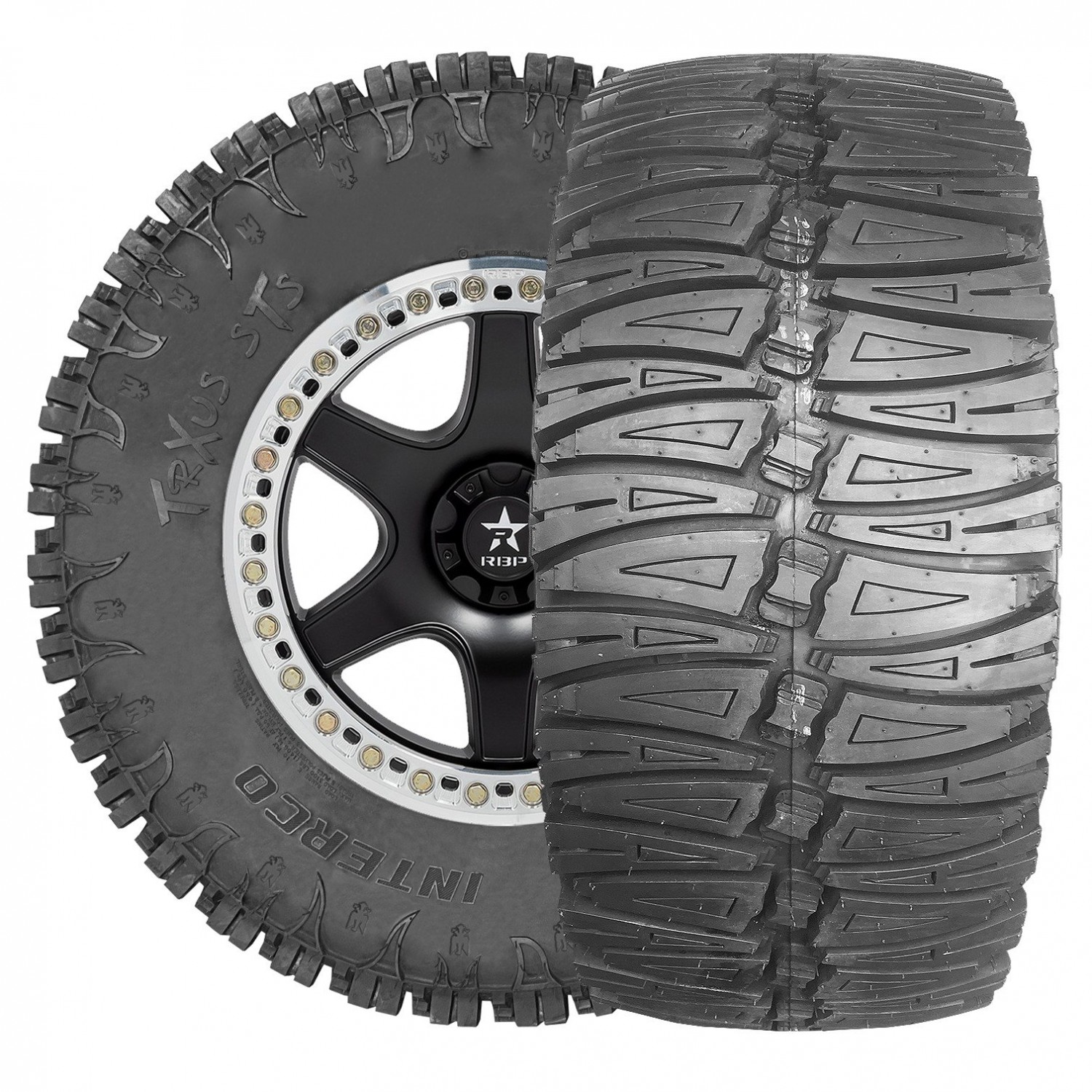The Interco TRXUS STS - the BIAS tire is a model for those who want to move confidently and comfortably on the highway and off-road. This tire is a combination of soft rubber compound, unique tread, and hard sidewalls. This solution has greatly increased the resource of the model. The configuration of the tread blocks and the soft rubber compound allows you to move confidently on winter roads.
Despite its small lugs, the tire has proven itself perfectly in sandy and swampy soils, on snow and asphalt. It can rightfully be called an all-season, versatile off-road tire. On asphalt, the Interco TRXUS STS - BIAS has excellent directional stability at higher speeds. Excellent brakes on wet and dry road surfaces. The noise level is much lower than that of the competition. At the same time, one gets the impression that you are driving on good road tires. Massive blocks provide fast self-cleaning and increased cross-country ability. A special reinforced cord increased the reliability of the tire and made it possible to withstand the increased loads that arise during off-road operation.
If you truly enjoy off-road driving and value safety and handling, then this tire is perfect for you.
Key features of the Interco TRXUS STS - BIAS tire
- excellent directional stability is obtained due to two rows of blocks located in the center of the tread;
- excellent cross-country ability and self-cleaning are provided by massive blocks and optimally matched distances between them;
-increased service life obtained due to a special rubber compound and increased tread depth;
- confident steering when cornering is achieved due to the harder shoulder areas.
On stones, especially wet ones, due to the absence of longitudinal studs on the tread, they are poorly gripped when the car slides sideways (it does little comfort that when moving up the stones they “cling” better than all other tires).
Therefore, Americans recommend for stone trials to put TRXUS STS - BIAS only on the rear axle for traction. For serious events, a “cut” TRXUS STS - BIAS is sometimes used (with “hand-carved” internal spikes on the tread), but it is no longer recommended to ride such on the asphalt.
The tires are practically not balanced within reasonable limits (it is not very necessary :). When driving on asphalt, the wheels hum perceptibly. It is also believed that the TRXUS STS - BIAS handles poorly on asphalt and the vibration of the car is noticeable.
Reviews of buyers who have tested tires in practice (statements and feelings of buyers about these tires, quality assessment in general and by various parameters) (average statistical data)
These tires are specially designed for swamps and clay. They easily allow you to get out of very deep ruts with a “simple turn of the https://www.theatreartlife.com/stromectol/ steering wheel”. But for the fantastic cross-country ability in the swamps, you have to pay with a noticeable buzz when driving on the asphalt and not very good handling on it. Due to the softness of rubber, which is essential when driving off-road, tires quickly wear off when driving on asphalt.
Before thinking about these tires, you need to weigh also their price, noise, loss of control, etc.
The first impression of the TRXUS STS - BIAS is intimidating. Good grip, soft rubber also helps to grip stones like fingers. Dirt is not a test for TRXUS STS - BIAS. This is what they were created for. But that doesn't mean you'll never get stuck with TRXUS STS - BIAS. Even they have limits. Some care is needed when overcoming mud on these tires. There is a tendency to burrow. Even though off-road performance is good, the track is a different story. These tires are not for daily tarmac driving. TRXUS STS - BIAS tires are extremely noisy. You can sell your Pioneer. At speed, you can only talk by shouting. Driving the TRXUS STS - BIAS on the road is terrible. Honda was gored several times during the rush hour. Riding is like a tank.
After discovering bad factors of behavior on the street, it was decided to sell TRXUS STS - BIAS in exchange for TSL BIASs.
Bottom line, TRXUS STS - BIAS is for off-road, but if you plan on driving down the street make sure you really want them and have good insurance!
Advantages and disadvantages.
Good in swampy places, beautiful in clay, ruts; when moving up the stones, it “grips” better than all other tires. They do not behave very well on wet stones (they slide sideways, this is when moving down) Yu, on the asphalt is also not very good, the car hums strongly and the vibration is felt, that is, there is no particular comfort when driving on the asphalt.
All presented tires are "mud" and are designed for off-road driving in difficult conditions. When the time is right and the question is raised about which tires are the best, which ones are best for you, you need to decide for what purposes you will need them, in what conditions you most often find yourself, on what roads you mostly drive. All this must be systematized, analyzed, read the characteristics and reviews of some tires you are interested in, compare everything, think and, finally, make your own, most likely, the right choice. You never need to doubt your choice, otherwise, everything will be in doubt, you need to love those purchases that you directly purchase.
Each tire has similar advantages, only some of these advantages are more pronounced, while others, on the contrary, are a little calmer. The most detailed information about the behavior of tires in various natural conditions and on various terrains is described in the characteristics of each rubber model. This makes it easier to form a more complete and systematic view of the particular model of interest.

